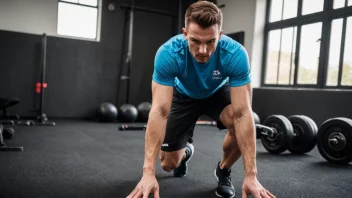Video analysis has become an essential tool for athletes looking to elevate their performance in water sports. By capturing movements and techniques on camera, athletes can better understand their strengths and weaknesses, leading to significant improvements. This method not only aids in refining skills but also enhances safety by identifying potentially harmful practices. Here are five effective ways to utilize video analysis for performance improvement in water sports.
1. Technique Assessment
One of the primary uses of video analysis in water sports is to assess an athlete's technique. By recording practice sessions or competitions, athletes can review their movements in detail. This can help to identify areas for improvement, such as:
- Stroke efficiency: Analyze the fluidity and power of strokes.
- Body positioning: Check for optimal alignment and posture.
- Timing and rhythm: Evaluate the synchronization of movements.
Utilizing slow-motion playback allows athletes to see minute details that may be missed during real-time performance. This scrutiny can lead to targeted drills that enhance overall technique.
2. Identifying Strengths and Weaknesses
Video analysis provides an objective view of an athlete's performance, helping them to identify personal strengths and weaknesses. By comparing different performance clips over time, athletes can:
- Track progress: Observe improvements or regressions in skills.
- Highlight strengths: Recognize what aspects of their performance are already strong.
- Target weaknesses: Focus on specific areas that require additional training.
This data-driven approach empowers athletes to customize their training regimens, ensuring they allocate time effectively to areas that need the most attention.
3. Enhancing Safety and Injury Prevention
Safety is paramount in water sports, and video analysis can play a crucial role in injury prevention. By reviewing footage, athletes can spot risky behaviors or poor technique that may lead to injuries, such as:
- Overexertion: Recognizing signs of fatigue that could lead to accidents.
- Poor body mechanics: Identifying movements that place undue stress on joints.
- Environmental awareness: Assessing how athletes interact with the water and surroundings.
By addressing these issues through video feedback, athletes can adjust their techniques and strategies, ultimately fostering a safer training environment.
4. Learning from the Pros
Video analysis is not only beneficial for personal performance but also for learning from elite athletes. Analyzing footage of professional competitors can provide valuable insights into:
- Advanced techniques: Understanding how top athletes execute complex maneuvers.
- Strategic decisions: Observing tactical choices made during competitions.
- Adaptation to conditions: Learning how professionals adjust their techniques in varying water conditions.
By studying these aspects, amateur athletes can incorporate proven strategies into their own training, leading to improved performance outcomes.
5. Utilizing Technology for Better Insights
With advancements in technology, the tools available for video analysis have become more sophisticated. Athletes can now leverage various software and applications that offer features such as:
- Frame-by-frame analysis: Breaking down movements in detail.
- Graphical overlays: Adding visual cues to assist in understanding technique.
- Performance metrics: Gathering data on speed, stroke count, and efficiency.
These tools not only enhance the quality of analysis but also provide a more comprehensive understanding of performance metrics, helping athletes to make informed adjustments to their training.
In conclusion, video analysis serves as a powerful ally for athletes in water sports seeking to improve their performance while prioritizing safety. By focusing on technique assessment, identifying strengths and weaknesses, enhancing safety practices, learning from professionals, and utilizing advanced technology, athletes can make significant strides in their training and competition readiness. Embracing this innovative approach will not only refine skills but also foster a deeper understanding of personal performance dynamics.






